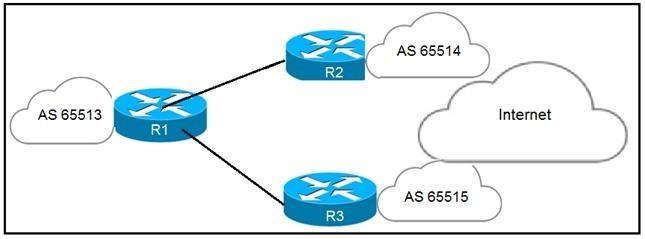
Refer to the exhibit. An engineer has successfully fixed BGP peering issue. R1 has an established eBGP peering with R2 and R3. Which mechanism should the engineer apply in order to steer the traffic correctly?
A. The MED attribute can be applied on R2 to influence R1 to use it as the primary path.
B. The local preference attribute can be applied on R3 to influence AS 65513 to use AS 65515 as the secondary path.
C. The weight attribute can be applied on R2 to influence AS 65513 to use AS 65515 as the primary path.
D. The IGP metric can be manipulated on R1 to allow traffic to be load balanced between R2 and R3.


I is an eBGP session. So setting the weight or local-preference on R2 or R3 does not influence how R1 send traffic to either R2 or R3. So B an C are out. From R1 points of view setting the MED would make sense, but de default for Cisco is 0. So when you set the MED on R2 to any value higher then 0, it becomes less attractive. So indeed D makes the most sense